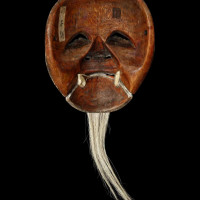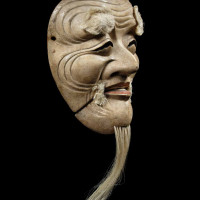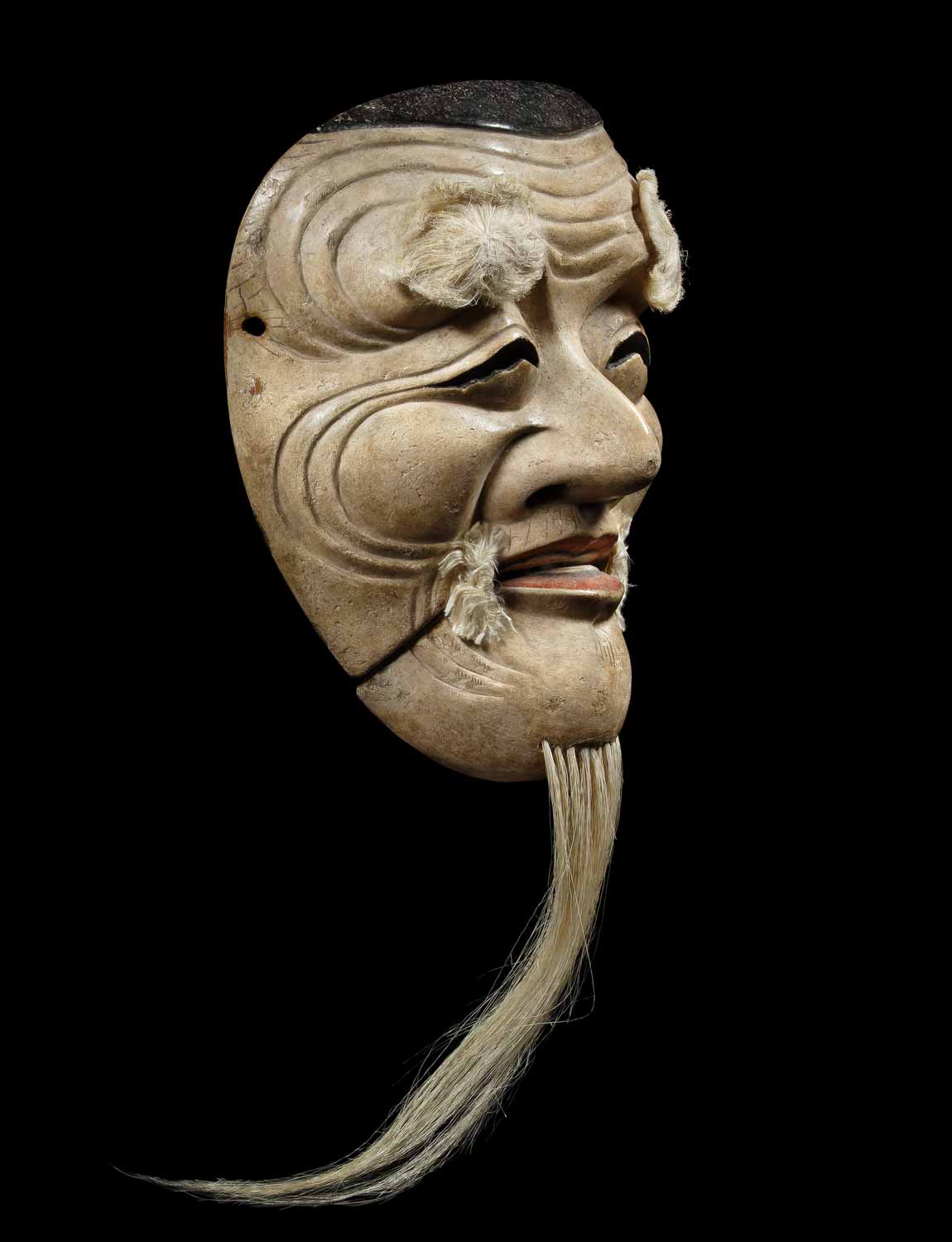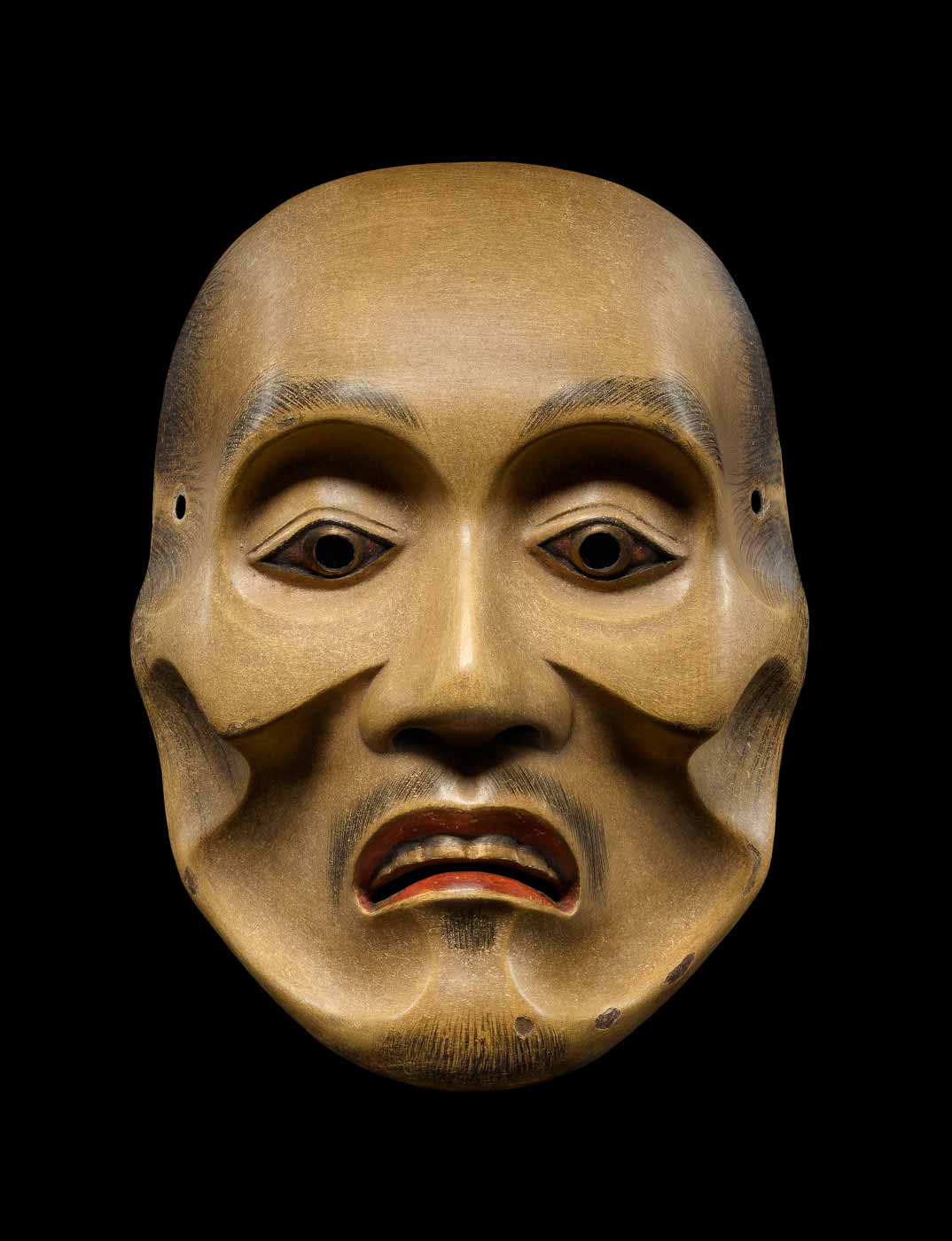Okina
Mask



- Contact Us
-
Material
Wood, gesso, polychrome pigments, beard applied animal hair, free moving lower jaw attached with silk cords
-
Size
18.6 (h) x 15.9 x 7.9 cm
-
Period
Edo period, 18th Century
-
Box
Kiribako storage box
Description
Noh mask of Okina (Hakushikijo)
𝐏𝐫𝐨𝐯𝐞𝐧𝐚𝐧𝐜𝐞 : 𝐇𝐨𝐬𝐨𝐤𝐚𝐰𝐚 𝐝𝐚𝐢𝐦𝐲𝐨 𝐟𝐚𝐦𝐢𝐥𝐲
The Hosokawa clan (細川氏, Hosokawa-shi) was a family of powerful daimyos of Japan. This clan ruled the ancient provinces of Awa, Awaji, Bitchu, Sanuki, Settsu, Tamba, Tosa and Yamashiro. It was divided and lost its importance after the assassination of Hosokawa Masamoto in 1507.
.......
Okina, also known as Hakushikijō, this white-faced mask of a happy old man is used in noh theater and festival performances of the play OKINA, also known as SHIKISANBA.
Deep wrinkles form round patterns on his forehead and cheeks. The wavy slit eyes brim with mirth, and the joyful mouth exposes only a few stubs of teeth. The chin, severed from the mask and then re-attached by means of hemp cords passed through holes in the upper and lower jaw. Pompoms made of hemp are glued on for eyebrows. A black horizontal strip at the upper edge of the mask indicates where it meets a black lacquer hat.
Okina masks range from quite large to smaller than the human face. The oldest mask with an original inscription dated 1477 is kept at the Istukushima Jinja Shinto Shrine in Hiroshima Prefecture.
Unknown carver




